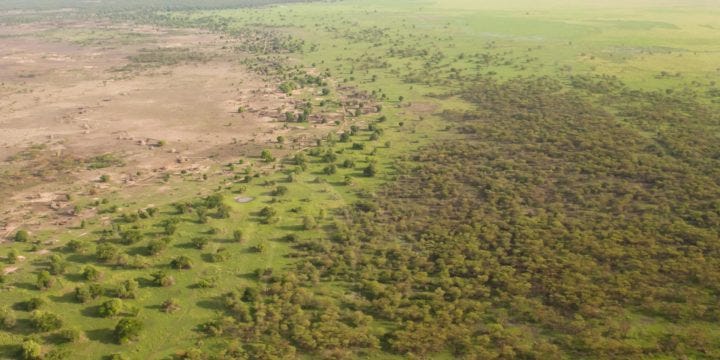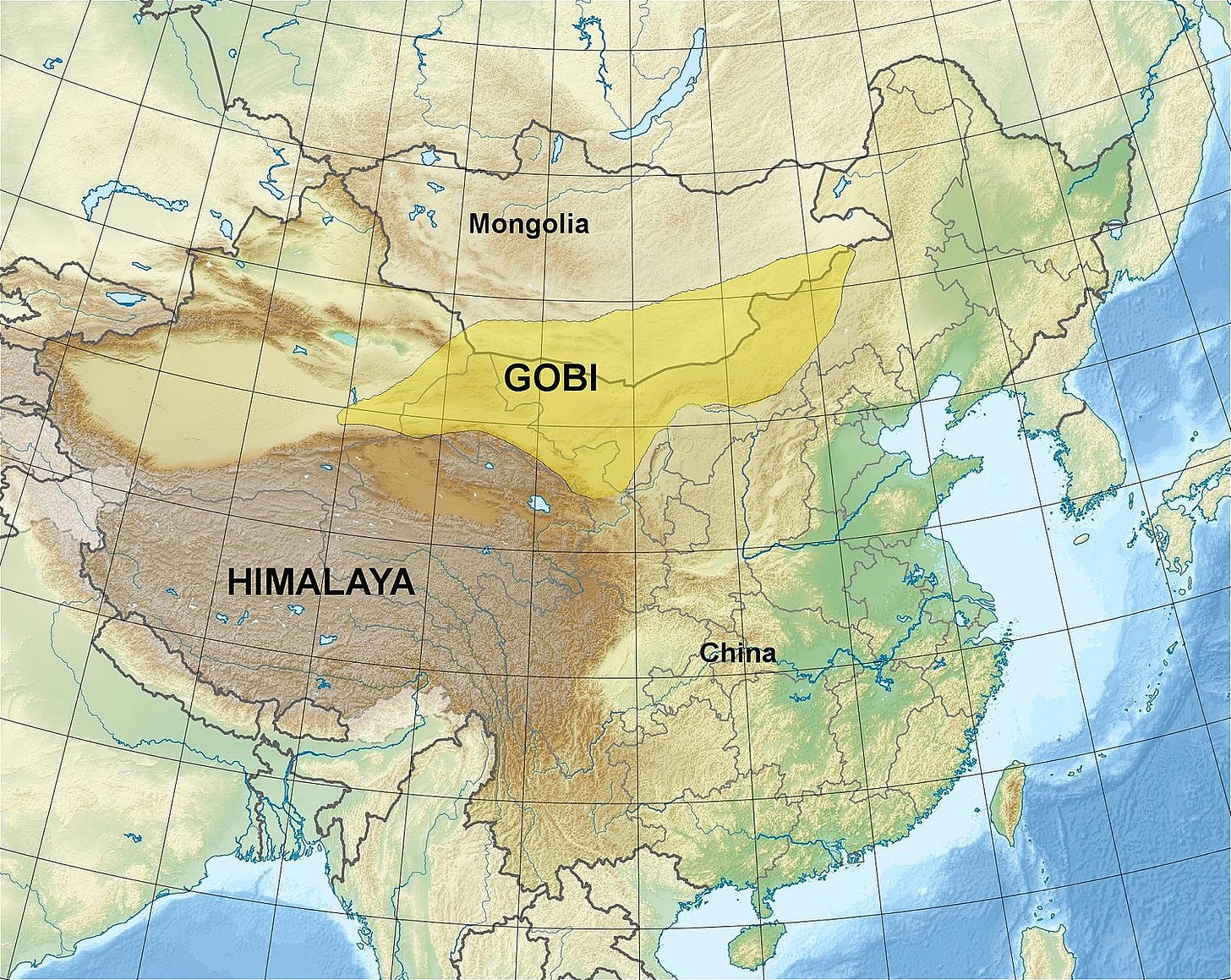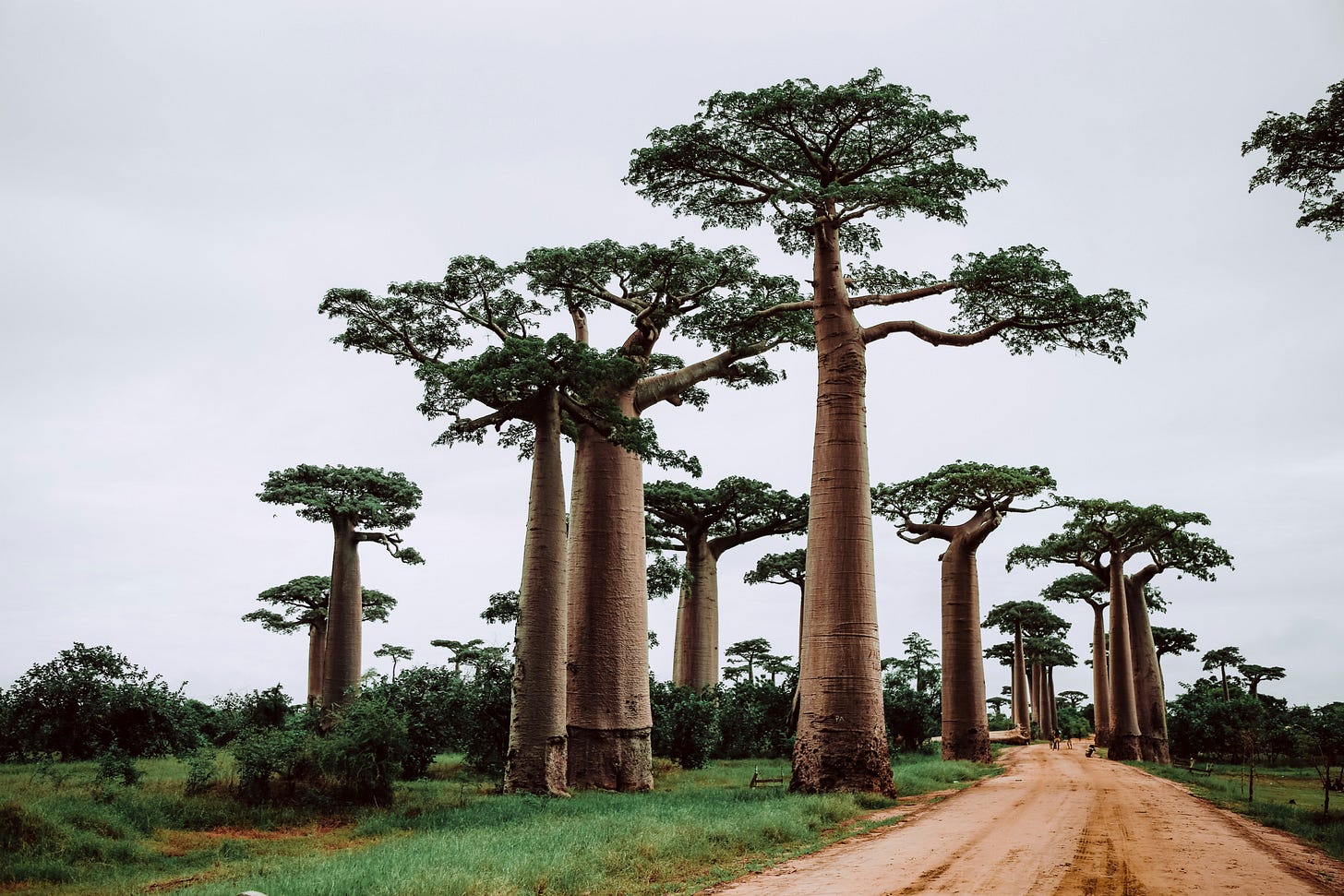
An 8,000 kilometer long wall, spanning the width of a continent. Sounds rather threatening, doesn’t it? Not very inclusive. But wait, hear me out.
This wall isn’t made of cold metal or stone. Instead, this wall is alive, breathing, teeming with life. Made up of lush green trees, their canopies swaying softly in the wind. This wall is not meant to keep anyone out, but provides a refuge for life, with teetering birds flying in and out of its branches. This is the Great Green Wall.
Suddenly those 8,000 kilometers, spread across 22 countries, sound impressive and hopeful. Launched by the African Union in 2007, the utopian project aims to usher in a new era of sustainability and economic growth and spans across Algeria, Burkina Faso, Benin, Chad, Cape Verde, Djibouti, Egypt, Ethiopia, Libya, Mali, Mauritani, Niger, Nigeria, Senegal, Somalia, Sudan, The Gambia, and Tunisia. What exactly does the initiative entail, and how far along is this wall, 17 years after its introduction?

The Green Sahara
Sahara keywords: dry; hot; barren. But it hasn’t always been that way. The area used to be quite wet and fertile, an ecosystem much like what the Great Green Wall strives to create. 8,000 years ago, there used to be rivers, lakes, and greenery. The period of this so-called Green Sahara started about 14,000 years ago, at the end of the last ice age, and ended some 5,000 years ago. Partly the change from such a humid, fertile area into an arid one can be attributed to changes in the Earth’s orbit. Due to these changes, the northern African climate shifts between arid and humid about every 20,000 years.
But there’s more. Humans might have had a little something to do with this last shift as well. They were attracted to the abundance of the land, and brought their livestock with them. According to research by archeologist Dr. David Wright, the grazing of goats and cattle exposed the soil and sand underneath the vegetation they consumed. That soil and sand reflected more sunlight than the grasses, which caused the atmosphere to heat up and, perhaps more importantly still, reduced the intensity of the African monsoon.
As a consequence, the climate became hotter and drier, diminishing the amount of vegetation even further, which in turn worsened the reflection of sunlight, which caused more heat and weaker monsoons. And so forth and so on. The timeline checks out for this theory to be true. When herding became more common along the Nile river about 8,000 years ago, the desert started to expand alongside it. And the Sahara hasn’t stopped growing to this day.
Chinese green wall
The Great Green Wall is not an original idea - in 1978, China initiated its own project of the same name. In an attempt to stop a further spread of the Gobi desert (a quarter of China’s landmass is desert), the country aims to create a wall of forests roughly 5000 kilometers long and up to some 1500 kilometers wide in some places. And the efforts have not been for nothing: moving dunes have come to a standstill and sandstorms decreased in frequency by one-fifth between 2009 and 2014 throughout the whole of China. The project will continue until 2050.

Challenges and progress
The initiative is not just focused on sustainability goals. Though these are certainly central, making the area more livable in general is also an important aspect. 100 million hectares of degraded land are to be restored, 250 million metric tons of carbon are supposed to be sequestered, and the target is to create 10 million jobs, all by 2030. And however much good work has already been done - about 18 million hectares of degraded land has been restored - the Great Green Wall certainly faces challenges. Those 18 million hectares? They’re merely 18% of the total goal.
A lack of funding, instability in the region, and political detachment all play a role in slowing down progress. The project being finished by 2030 seems highly unlikely. Moreover, it has moved away from the rigid idea of a wall of trees. Instead, it switched to a broader idea of creating a green area comprised of forests, agricultural land, and grassland.

Another problem in the early stages of the initiative, is that lots of trees were planted but there was no-one to care for them. Similar problems occurred with China’s Great Green Wall. These trees did not survive long. “If all the trees that had been planted in the Sahara since the early 1980’s had survived, it would look like Amazonia”, said Chris Reij, a sustainable land management specialist and senior fellow at the World Resources Institute to Smithsonian magazine.
Regardless, there has been growth and especially Ethiopia has made big strides. The country managed to revive two million hectares of land - about the same size as the country Slovenia - and created over 218,000 jobs. Niger, too, has been able to restore 800,000 hectares of land that can now be used as farmland.
This shift from a literal wall to a metaphorical wall has made all the difference. Now, grassroots initiatives and local knowledge have a voice in the project. The farmland which the forests are interspersed with is managed using indigenous farming techniques. Naturally, these techniques are especially suited to the specific local area. In Burkina Faso, farmers dig shallow pits in less permeable soil to capture rainwater for their crops. This technique, called Zai, has been used for generations in the Western Sahel. Sometimes compost is added to the pits to attract termites, whose tunnels will help loosen the soil and makes it easier for rainwater to seep deep into the ground.

Another example is the use of the Faidherbia albida tree in Niger on crop fields. These trees shade the crops during the dry season and drop their leaves during the wet season, which provide nutrients for the soil. The empty branches also leave enough space for the sun’s rays to reach the crops during growing season.
It seems curious that such effective indigenous agricultural techniques were ever abandoned in the first place. The explanation lies in colonial history. When Niger was under French rule, all trees were official property of the state, regardless of whether they were on private land. Farmers who dared chop wood from trees on their own land had the prospect of a jail sentence. This law was introduced in an attempt to preserve trees, but it had the exact opposite effect. Having trees on private land was discouraged by this policy after all. In 2000, the law was amended, and farmers regained more control over the trees on their land.
The right kind of tree
The initial idea of a wall of forests might be an attractive image, but turns out to be harder to achieve in practice. However, opting for a mosaic of agricultural land, grassland, and forests offers more possibilities. The vague notion of ‘planting trees’ isn’t enough: “You need to select the right species to plant them in the right place”, says botanist Tiziana Ulian from Royal Botanic Gardens, Kew, in the U.K., the scientific partner for the Great Green Wall Initiative.
The botanist led a Great Green Wall cross-border pilot project in Burkina Faso, Mali, and Niger from 2013-2020 under Kew’s Millennium Seed Bank Partnership in order to build a restoration model that would be beneficial for the environment as well as local communities. The goal was to develop a model that could be applied to the wider initiative. Ulian and her team collaborated with local communities in 120 villages to find which native plant species would be most useful in restoring the land. “Our focus has been on native species because they’re more likely to withstand climatic change [and] they have a wider genetic diversity”, she says.

Baobab and tamarind
Among the 55 selected species are the baobab tree, used for its vitamin C-rich fruits; tamarind, also used for food; and African grape, which can be used for medicine. These species were planted on 2,235 hectares of degraded land, which went hand-in-hand with the creation of opportunities for sustainable income for 32,000 people. This generation of income for the local community can contribute to the conservation of restored areas in the future. If taking care of the tree is more beneficial than chopping it down, its preservation is also more likely.
Despite its challenges, the Great Green Wall is a hopeful initiative in the face of environmental challenges. It has shown us that indigenous knowledge should be respected and listened to, especially regarding the land that they’ve been living on for generations. It is also a reminder to work with nature, rather than impose our will upon it. By embracing these principles, we can cultivate a greener, more resilient future for the generations that come after us.




